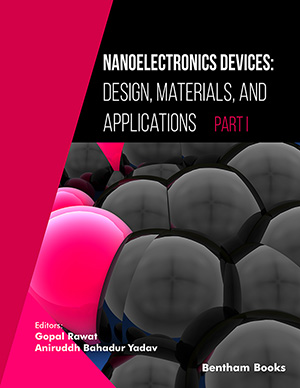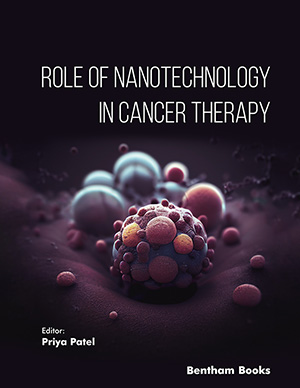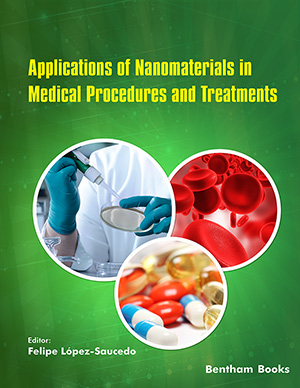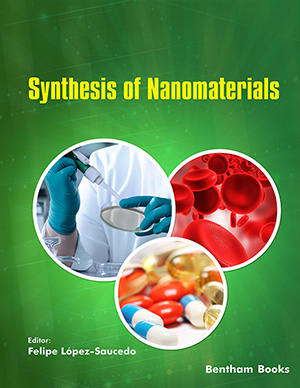Abstract
Hexavalent chromium (Cr(VI)) is a well-known carcinogen, and hence its removal from aqueous media is an important area of research in the field of environmental engineering. Adsorptive removal and catalytic reduction are the two most common techniques applied for this purpose. In this regard, nanoparticle-mediated technology has contributed significantly. In the current review article, a systematic investigation has been carried out to find the latest developments that took place in the domain of Cr(VI) removal by nanotechnology. The major portion deals with the advancement and application of the new-age materials, such as carbon nanotubes (CNTs), g-C3N4, MXenes, zero-valent iron (ZVI), and their composites, for the Cr(VI) remediation purpose. Various interesting mechanisms, as proposed by different research groups, have been covered. Applications of the nanocomposites in the real wastewater scenario have also been highlighted. Different characterization techniques often conducted in order to get insight into Cr(VI) removal process have been mentioned. Some patents related to this field have been discussed. Lastly, the future scope of the nanomaterials, current challenges, feasibility of using these nanomaterials in large-scale treatment plants, etc., have been addressed before concluding the article.
Keywords: Cr(VI), g-C3N4, MXenes, zero-valent iron, nanocomposites, water bodies.
[http://dx.doi.org/10.1016/j.scitotenv.2017.06.103] [PMID: 28724223]
[http://dx.doi.org/10.1016/j.cplett.2019.136934]
[http://dx.doi.org/10.1080/02757540.2017.1328503]
[http://dx.doi.org/10.1016/j.cej.2020.124340]
[http://dx.doi.org/10.1016/j.colsurfa.2020.124751]
[http://dx.doi.org/10.1016/j.ecoenv.2019.109902] [PMID: 31704325]
[http://dx.doi.org/10.1016/j.watres.2011.01.012] [PMID: 21303713]
[http://dx.doi.org/10.1016/j.jcis.2016.02.054] [PMID: 26962976]
[http://dx.doi.org/10.1016/j.cej.2015.04.151]
[http://dx.doi.org/10.1016/j.wse.2015.01.009]
[http://dx.doi.org/10.1016/j.molliq.2017.03.023]
[http://dx.doi.org/10.1016/j.cej.2018.12.081]
[http://dx.doi.org/10.1016/j.cjche.2018.08.024]
[http://dx.doi.org/10.1016/j.jcis.2019.11.120] [PMID: 31812866]
[http://dx.doi.org/10.1016/j.ceramint.2020.09.221]
[http://dx.doi.org/10.1016/j.ceramint.2021.05.326]
[http://dx.doi.org/10.1016/j.jhazmat.2021.125777] [PMID: 33839501]
[http://dx.doi.org/10.1142/S2010135X18500352]
[http://dx.doi.org/10.1002/pat.5148]
[http://dx.doi.org/10.1016/j.seppur.2021.118911]
[http://dx.doi.org/10.1016/j.apcatb.2021.120419]
[http://dx.doi.org/10.1016/j.jmst.2020.09.008]
[http://dx.doi.org/10.1016/j.cej.2018.10.137]
[http://dx.doi.org/10.1016/j.jtice.2017.05.010]
[http://dx.doi.org/10.1039/D1RA01489G]
[http://dx.doi.org/10.1016/j.chemosphere.2019.01.045] [PMID: 30639812]
[http://dx.doi.org/10.1039/C6NR09137G] [PMID: 28225115]
[http://dx.doi.org/10.1016/j.jphotochem.2020.112934]
[http://dx.doi.org/10.1021/acs.iecr.8b05990]
[http://dx.doi.org/10.1016/j.apsusc.2020.147325]
[http://dx.doi.org/10.1016/j.jphotochem.2019.02.002]
[http://dx.doi.org/10.1016/j.cej.2019.123209]
[http://dx.doi.org/10.1016/j.jtice.2019.12.011]
[http://dx.doi.org/10.1016/j.jclepro.2020.122009]
[http://dx.doi.org/10.1016/j.enmm.2020.100332]
[http://dx.doi.org/10.1016/j.jwpe.2020.101370]
[http://dx.doi.org/10.1016/j.chemosphere.2018.11.040] [PMID: 30448748]
[http://dx.doi.org/10.1016/j.chemosphere.2019.01.070] [PMID: 30669110]
[http://dx.doi.org/10.1016/j.scitotenv.2020.137112] [PMID: 32084682]
[http://dx.doi.org/10.1007/s11356-019-07070-1] [PMID: 31828712]
[http://dx.doi.org/10.1016/j.ijbiomac.2020.01.199] [PMID: 31978474]
[http://dx.doi.org/10.1007/s12034-019-1916-z]
[http://dx.doi.org/10.1021/acsanm.8b02286]
[http://dx.doi.org/10.1016/j.ijbiomac.2021.07.182] [PMID: 34343587]
[http://dx.doi.org/10.1016/j.scitotenv.2020.139316] [PMID: 32447080]
[http://dx.doi.org/10.1016/j.jcis.2019.09.106] [PMID: 31585219]
[http://dx.doi.org/10.1016/j.chemosphere.2020.127158] [PMID: 32470741]
[http://dx.doi.org/10.1016/j.jcis.2020.03.077] [PMID: 32247197]
[http://dx.doi.org/10.1016/j.synthmet.2020.116470]
[http://dx.doi.org/10.1016/j.apcatb.2020.119754]
[http://dx.doi.org/10.1016/j.colsurfa.2021.126388]
[http://dx.doi.org/10.1016/j.jece.2021.106203]
[http://dx.doi.org/10.1016/j.jhazmat.2020.125027] [PMID: 33421880]
[http://dx.doi.org/10.1016/j.apsusc.2019.144181]
[http://dx.doi.org/10.1016/j.jcis.2021.05.124] [PMID: 34077842]
[http://dx.doi.org/10.1016/j.jcis.2018.09.080] [PMID: 30278328]
[http://dx.doi.org/10.1016/j.enmm.2020.100319]
[http://dx.doi.org/10.1016/j.scitotenv.2020.140614] [PMID: 32659556]
[http://dx.doi.org/10.1016/j.jcis.2019.09.041] [PMID: 31677815]
[http://dx.doi.org/10.1016/j.eti.2019.100540]
[http://dx.doi.org/10.1016/j.chemosphere.2018.05.046] [PMID: 29772424]
[http://dx.doi.org/10.1016/j.jare.2017.06.002] [PMID: 28663825]
[http://dx.doi.org/10.1016/j.jcis.2020.04.090] [PMID: 32388289]
[http://dx.doi.org/10.1016/j.envpol.2020.115831] [PMID: 33213947]
[http://dx.doi.org/10.1016/j.jhazmat.2021.125400] [PMID: 33607584]
[http://dx.doi.org/10.1016/j.psep.2018.11.006]
[http://dx.doi.org/10.1016/j.cej.2019.123496]
[http://dx.doi.org/10.1016/j.scitotenv.2018.03.206] [PMID: 29579666]
[http://dx.doi.org/10.1016/j.ecoenv.2020.110773] [PMID: 32464445]
[http://dx.doi.org/10.1016/j.envint.2019.04.020] [PMID: 31252168]
[http://dx.doi.org/10.1016/j.trac.2019.05.005]



























